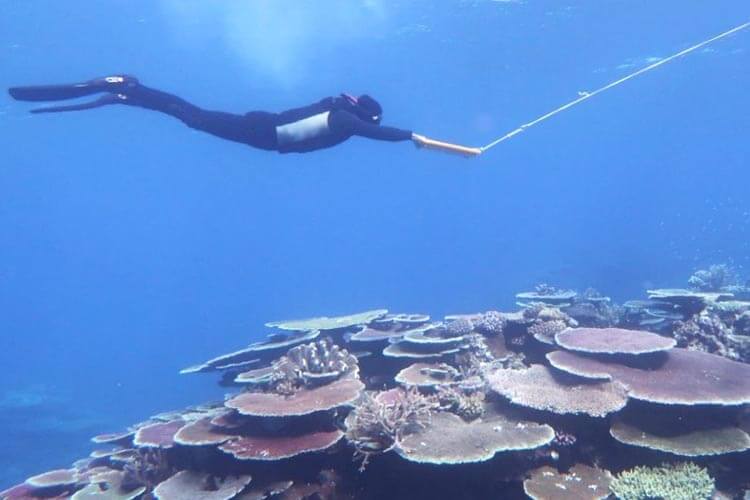
The Australian Institute for Marine Science (AIMS) has reported that there has been a slight decrease in coral cover across the Great Barrier Reef, following the record levels of cover reported in 2022.
Coral cover is reported to have decreased an average of 0.9 per cent across northern, central and southern parts of the reef, from a total of 111 reefs surveyed during the year.
The Northern region of the GBR reported a drop to 35.7 per cent coverage, down from 36.5 per cent in 2022; the Central region to 30.8 per cent, down from 32.6 per cent; and the Southern reef relatively unaffected at 33.8 per cent coral cover, down from 33.9 per cent.
Above-average water temperatures led to mass coral bleaching in 2012/22, the fourth event since 2016 and the first recorded during a La Niña – the cooling phase of the El Niño Southern Oscillation (ENSO), which drives water temperature changes across the eastern Pacific, with a substantial impact on global climate.
AIMS reports that this bleaching ’caused some coral mortality and has contributed to a pause in recent hard coral recovery across the Northern and Central GBR.’
Related coral reef articles

Surveys conducted during 2023 recorded no bleaching, or low bleaching, across the total extent of the reef. Overall, however, AIMS reports that despite the small declines, regional hard coral cover was similar to that reported in 2022.
In addition to the relatively stable temperatures over the past year, the surveyed reefs did not suffer greatly from other stressors known to impact the health of coral reefs. There were no cyclones or other severe weather events, and outbreaks of crown-of-thorns starfish had – according to the study – ‘largely decreased’, although a small number of persistent outbreaks were reported in the GBRs southern extent.
‘The 2022 bleaching event was the first ever recorded during a La Niña year, which are usually characterised by cooler temperatures,’ said AIMS LTMP leader Dr Mike Emslie. ‘If there were no disturbances, we would expect the recent increases in coral cover to continue this year.
‘However, this pause indicates that a mass bleaching event, even if less severe, with low mortality, is still enough to put the brakes on this coral recovery.
‘This means the Reef is still at risk of decline from more frequent disturbances. AIMS is working to understand the effect of this climatic instability through monitoring and research.’


The reefs were surveyed between August 2022 and May 2023 under the AIMS Long Term Monitoring Program (LTMP), which has been in operation since the first surveys were taken, in 1985. The report, however, published on 9 August, does not take into account the recent elevated sea surface temperatures (SST), which reached record levels in late July.
Concern has also been voiced as the record global average SST has coincided with the onset of a warming El Niño, raising the possibility of further mass bleaching events as the Australian winter draws to an end.
‘The Great Barrier Reef remains exposed to the predicted consequences of climate change,’ says the report, ‘as well as the ongoing risk of outbreaks of crown-of-thorns starfish and tropical cyclones. The increasing frequency and spatial extent of mass bleaching events in recent years poses a significant risk to the state of the reefs in the GBR.’
AIMS Research Program Director Dr David Wachenfeld said that while the overall state of the GBR’s recovery was good news, the current slowdown and minor decline showed that even relatively mild bleaching events had consequences for the Reef.
‘The 2022 coral bleaching event was not as severe as the 2016 or 2017 events but caused enough mortality to pause recent regional gains in hard coral cover,’ said Dr Wachenfeld. ‘The heat stress during the bleaching event also likely had sub-lethal effects, including reductions in coral growth and reproduction
‘Conditions were relatively mild over the 2023 summer with low levels of coral bleaching and no cyclones crossing the Reef. However, we are only one large-scale disturbance away from a rapid reversal of recent recovery.’
The complete Annual Summary Report of the Great Barrier Reef Coral Reef Condition 2022/2023 is available for download from AIMS.
- British diver who died in Malta suffered pulmonary barotrauma – inquest - 6 January 2026
- World’s largest medieval cog discovered off Copenhagen - 6 January 2026
- Tragedy strikes as Australian diver dies off Tulamben, Bali - 31 December 2025


